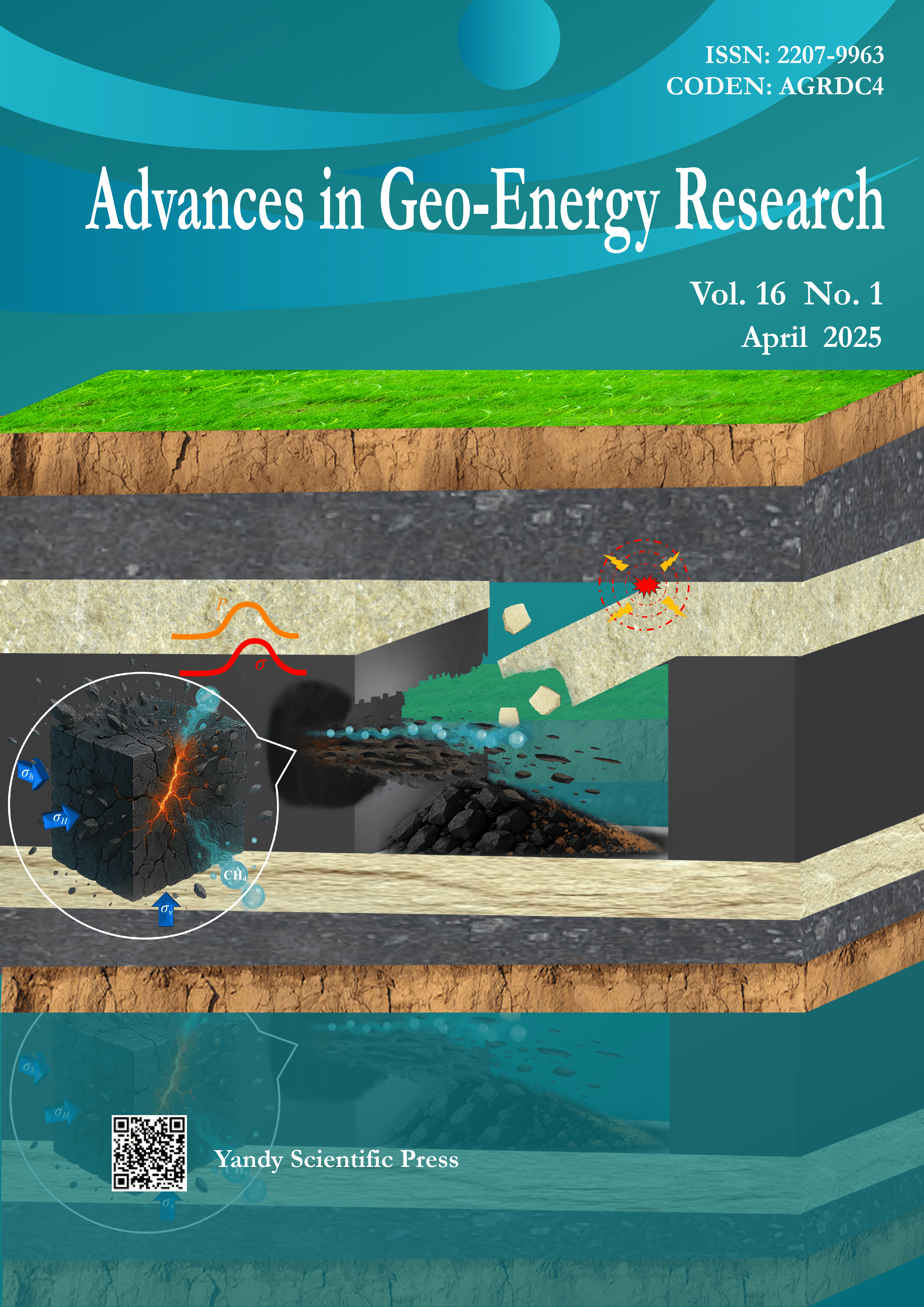Numerical simulation and optimization design of complex underground fracture network
Abstract
Understanding the complex behavior of fractured rock systems is critical for applications in energy development, geological sequestration, and tunnel construction. Microscale fracture surface morphology influences flow and mechanical behaviors, while upscaling frameworks. Despite progress in hydro-mechanical and thermo-hydro-mechanical coupling models, two-way mechanical-chemical interactions remain underexplored. Discrete fracture networks offer a robust statistical framework for modeling subsurface fracture systems. Advances in machine learning have accelerated the simulation and optimization of fractured geothermal systems, addressing the computational limitations of high-fidelity models. These methods support multi-objective design, enhance life cycle assessments, and provide insights into optimal geothermal management strategies. Fractured rocks serve as preferential pathways for fluid flow and heat transport, significantly influencing permeability and mechanical stability. However, the inherent complexity of coupled thermo-hydromechanical-chemical processes in these systems presents major challenges. Nonlinear fracture mechanics, stress perturbations, and chemical interactions drive dynamic changes in fracture connectivity and permeability, further complicated by recursive feedback mechanisms. By integrating numerical tools, machine learning techniques, and advanced discrete fracture network models, the fractured rock system could be optimized and clearly analyzed.
Document Type: Perspective
Cited as: Jiang, C., Chen, G., Zhu, W., Liu, J. Numerical simulation and optimization design of complex underground fracture network. Advances in Geo-Energy Research, 2025, 16(1): 1-3. https://doi.org/10.46690/ager.2025.04.01
DOI:
https://doi.org/10.46690/ager.2025.04.01Keywords:
Discrete fracture networks, multi-fields coupling, machine learning, optimizationReferences
Ameli, P., Elkhoury, J. E., Morris, J. P., et al. Fracture permeability alteration due to chemical and mechanical processes: A coupled high-resolution model. Rock Mechanics and Rock Engineering, 2014, 47: 1563-1573.
Bergen, K. J., Johnson, P. A., de Hoop, M. V., et al. Machine learning for data-driven discovery in solid earth geoscience. Science, 2019, 363(6433): 0323.
Chen, G., Jiao, J. J., Liu, Q., et al. Machine learning-accelerated multi-objective design of fractured geothermal systems. Nexus, 2024: 100044.
Chen, G., Luo, X., Jiao, J. J., et al. Fracture network characterization with deep generative model based stochastic inversion. Energy, 2023, 273: 127302.
Feng, X., Liu, J., Shi, J., et al. Phase equilibrium, thermodynamics, hydrogen-induced effects and the interplay mechanisms in underground hydrogen storage. Computational Energy Science, 2024, 1(1): 46-64.
Ikari, M. J., Marone, C., Saffer, D. M., et al. Slip weakening as a mechanism for slow earthquakes. Nature geoscience, 2013, 6(6): 468-472.
Jiang, C., Roubinet, D., Lei, Q., et al. Anomalous transport and upscaling in critically-connected fracture networks under stress conditions. Journal of Hydrology, 2024, 630: 130661.
Jolie, E., Scott, S., Faulds, J., et al. Geological controls on geothermal resources for power generation. Nature Reviews Earth & Environment, 2021, 2(5): 324-339.
Karniadakis, G. E., Kevrekidis, I. G., Lu, L., et al. Physics-informed machine learning. Nature Reviews Physics, 2021, 3(6): 422-440.
Lei, Q., Latham, J.-P., Tsang, C.-F. The use of discrete fracture networks for modelling coupled geomechanical and hydrological behaviour of fractured rocks. Computers and Geotechnics, 2017, 85: 151-176.
Salimzadeh, S., Nick, H. A coupled model for reactive flow through deformable fractures in enhanced geothermal systems. Geothermics, 2019, 81: 88-100.
Wang, X., Jiang, C., Lei, Q., et al. Impact of stress-driven crack growth on the emergence of anomalous transport in critically connected natural fracture networks. International Journal of Rock Mechanics and Mining Sciences, 2023a, 170: 105532.
Wang, Y., Zhong, K., Gao, Y., et al. Feasibility analysis of storing solar energy in heterogeneous deep aquifer by hot water circulation: Insights from coupled hydro-thermo modeling. Advances in Geo-Energy Research, 2023b, 10(3).
Wood, D. A. Variable interaction empirical relationships and machine learning provide complementary insight to experimental horizontal wellbore cleaning results. Advances in Geo-Energy Research, 2023, 9(3).
Xia, X., Jiao, X., Li, J., et al. Gas adsorption behavior in shale reservoirs: Insights from molecular scale. Capillarity, 2024, 13(3): 68-72.
Zhu, W., Chen, Z., He, X., et al. Numerical analysis of the dynamic mechanisms in hydraulic fracturing with a focus on natural fractures. Journal of Geophysical Research: Solid Earth, 2024, 129(12): e2024JB029487.
Zhu, W., Khirevich, S., Patzek, T. W. Impact of fracture geometry and topology on the connectivity and flow properties of stochastic fracture networks. Water Resources Research, 2021, 57(7): e2020WR028652.
Downloads
Downloads
Published
How to Cite
Issue
Section
License
Copyright (c) 2025 Author(s)

This work is licensed under a Creative Commons Attribution-NonCommercial-NoDerivatives 4.0 International License.
